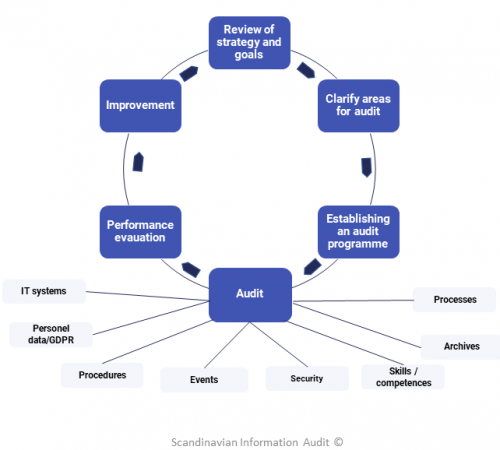Audit
Auditing can tell you where you stand!
Audit or revision is a method to identify discrepancies and possibilities. In the field of records management we audit IT systems, archives, security, governance and processes.
We can also audit the handling of personal data and other significant tasks and processes that pertain to the use of business critical information.
We measure against internal requirements and international standards in the ISO 30300 and ISO 27000 series, and conduct our audits in a manner that ensures value for everyone involved.
On the basis of hundreds of audits using ISO 30301 og ISO 15489, we can also develop maturity models, which can give valuable insights into the current status of the records management of your company or organisation.
Audit continuum model for records management
The audit continuum model below visualizes how an audit can be planned and incorporated into an annual wheel, and gives an overview of the areas that might be relevant to audit.

Examples of audits
